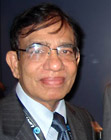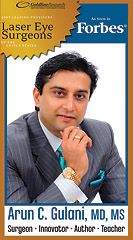
PREVENTING MEDICAL MISTAKES: PART ii – My recent Indian experience

If you think medical errors occur commonly in the United States, the status in India, our motherland, is even worse. Here are some frightening stories that will make you sit down and think.
Recently, I spent four weeks in India on vacation. During a visit to my alma mater, Trivandrum Medical College, I had multiple discussions with many senior physicians. Later, I was consulted on a few cases by my relatives and that is when I realized the extent of medical errors and malpractice in India.
Don’t get me wrong. India is bestowed with some of the finest medical institutions where anything from robotic surgery to organ transplants are being done regularly. Many tertiary care hospitals like the Apollo group, All India Institute of Medical Sciences and others have great reputation. But there are also many others who fall short of expectations abysmally, much to the detriment of their core stakeholders, i.e. patients.
One day, a relative of mine dropped by and said, “You must see my Maya and tell me if there is anything more can be done for her.” Maya’s story is quite tragic because the cause of her persistent headaches was not diagnosed in time. Initially, the local physician dismissed it as just headaches brought on by work-related stress, not uncommon in our society. A few months later when she developed behavioural changes, the mother was concerned and took her to a neurologist in a big tertiary care hospital where MRI of the brain revealed a large tumor occupying most of the frontal lobe of her left brain. All they could do was to “debulk” the tumor and give her some chemotherapy and send home with the suggestion, “This is as far as we can do. She will always have the weakness of her right side and speech problems. Not sure if she would walk.” They were pessimistic about her prognosis.
When I saw her, she was bedridden, incontinent with total right sided paralysis and severe speech problems needing 24-hour care. All I could do was to suggest to continue physical therapy and symptomatic remedies. The tumor could have been caught in time if only the initial medical specialist had paid a little more attention to her persistent headaches. I heard many similar horror stories of cancers and heart attacks being missed frequently.
The case of Mrs J T was even worse. Although just turned 80, she was an active lady and had visited with me here in Florida a few months ago. She developed chest pain one day and was taken to the emergency room of a tertiary care hospital where they diagnosed her as having “angina pectoris.” After a short hospitalization, she was discharged. The treating cardiologist said to the daughter, “Well, you know your mother is already past 80, so why bother about cardiac catheterization and such. You know they can produce complications.” Three days later, she died of an acute heart attack, presumably from closure of one of the major arteries that could have been prevented by a simple angioplasty.
There are many reasons for these types of medical errors and malpractice happen in India. To begin with, if you are past 70, you are considered “old” and doctors feel “just conservative management is all what is needed for you.” It doesn’t help either that laws arguably lack sufficient teeth to enforce accountability on the part of the doctors. Keeping track of medical errors and proving them in a court of law are humongous tasks and as my nephew, a lawyer himself, pointed out, “Instances of doctors being prosecuted or punished even if he or she has committed the most egregious mistake are very few and far between.” Given the significant costs and innumerable delays, beyond the means of many, associated with legal proceedings, aggrieved parties are seldom in a position to force the issue legally with doctors who appear to understand this predicament and thereby continue to operate with impunity. Most Indians also have a fatalistic approach, contended to look at any adverse event as, “It’s all one’s fate, that’s his karma.” Hence, they don’t pursue the issue further.
To be continued …
M.P. Ravindra Nathan, M.D., is a cardiologist and Emeritus Editor of AAPI Journal. His book “Stories from My Heart” was recently released. (www.amazon.com or www.bn.com).
Eye Care
ECHOLOCATION: Could it supplement Vision?

February (Eye care America) is the month for awareness for Age Related Macular Degeneration (AMD) and Low Vision Aids (LVA)
Age-Related Macular Degeneration (AMD) is the leading cause of severe vision loss in adults over age 50. The CDC estimate that 1.8 million people have AMD and another 7.3 million are at substantial risk for vision loss from AMD. Caucasians are at higher risk for developing AMD than other races and women more than men.
This eye disease involves the macula, a small, vital portion of the retina that is located on the inside back layer of the eye. It causes loss of central vision that can occur in two forms: “dry” or atrophic and “wet” or exudative
Some common symptoms are: a gradual loss of ability to see objects clearly, distorted vision, a gradual loss of color vision, and a dark or empty area appearing in the center of vision
It is a relentless condition, which can progress to irreversible vision loss. Early detection is necessary. Dietary changes favoring low-fat content and dark green leafy vegetables can slow vision loss. Nutritional supplements also may be beneficial.
We have in previous columns (KhaasBaat) outlined breakthrough technologies that can help some AMD patients with everyday life using telescope lens implants, etc. Computer chips are also being clinically tested in our quest to create a robotic eye.
Another function has recently been reviewed in the December issue of “Psychological Science.”
Some blind people use echolocation, a technique commonly associated with bats, to help compensate for lack of vision. They make sounds, often by snapping their fingers or clicking their tongue, and interpret the sound waves that bounce off objects to perceive their surroundings. However, not a lot is known about how echolocation compares with actual sight.
Scientists from the Brain and Mind Institute set out to compare echolocation's influence on blind people's perception with sighted individuals' perception.
The researchers found that blind people using echolocation were susceptible to visual illusions, just like sighted people. Their experiment included three groups of people: sighted people, blind echolocators and blind people not using echolocation. Each group lifted cubes of different sizes by strings and were asked which cube seemed heavier.
The blind group not using echolocation correctly judged that all the cubes weighed the same. But the sighted and echolocation groups both fell victim to the same illusion and overwhelmingly perceived the smaller cubes to be heavier. This optical illusion is known as the "Charpentier illusion."
The researchers concluded that "echolocation is not just a functional tool to help visually impaired individuals navigate their environment, but actually has the potential to be a complete sensory replacement for vision."
Be careful next time when you call someone “Blind as a Bat,” it could be a compliment!
Arun C. Gulani, M.D., M.S., is director and chief surgeon of Gulani Vision Institute in Jacksonville. He can be reached at [email protected] or visit www.gulanivision.com